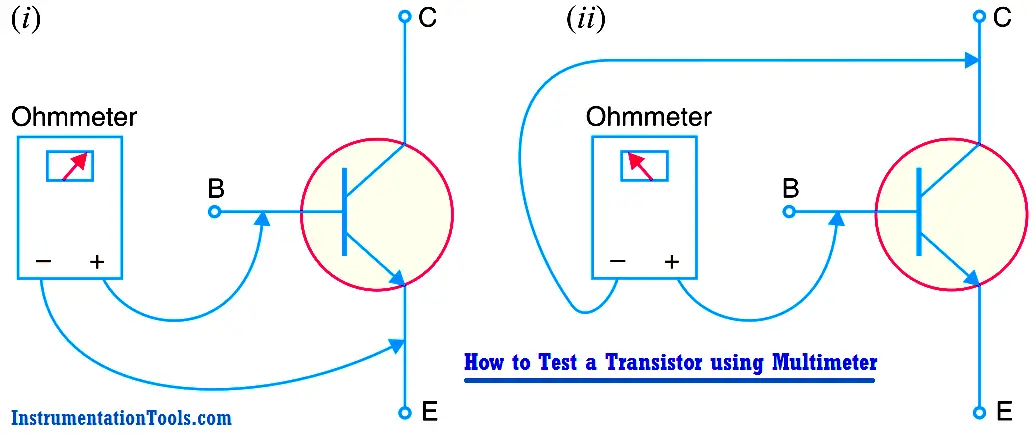An ohmmeter can be used to check the state of a transistor i.e., whether the transistor is good or not. We know that base-emitter junction of a transistor is forward biased while collector-base junction is reverse biased. Therefore, forward biased base-emitter junction should have low resistance and reverse biased collector-base junction should register a much higher resistance. Fig shows the process of testing an npn transistor with an ohmmeter.
(i) The forward biased base-emitter junction (biased by internal supply) should read a low resistance, typically 100 to 1 k as shown in Fig. (i). If that is so, the transistor is good. However, if it fails this check, the transistor is faulty and it must be replaced.

(ii) The reverse biased collector-base junction (again reverse biased by internal supply) should be checked as shown in Fig. (ii). If the reading of the ohmmeter is 100 k or higher, the transistor is good. If the ohmmeter registers a small resistance, the transistor is faulty and requires replacement.
Note. When testing a pnp transistor, the ohmmeter leads must be reversed. The results of the tests, however, will be the same.